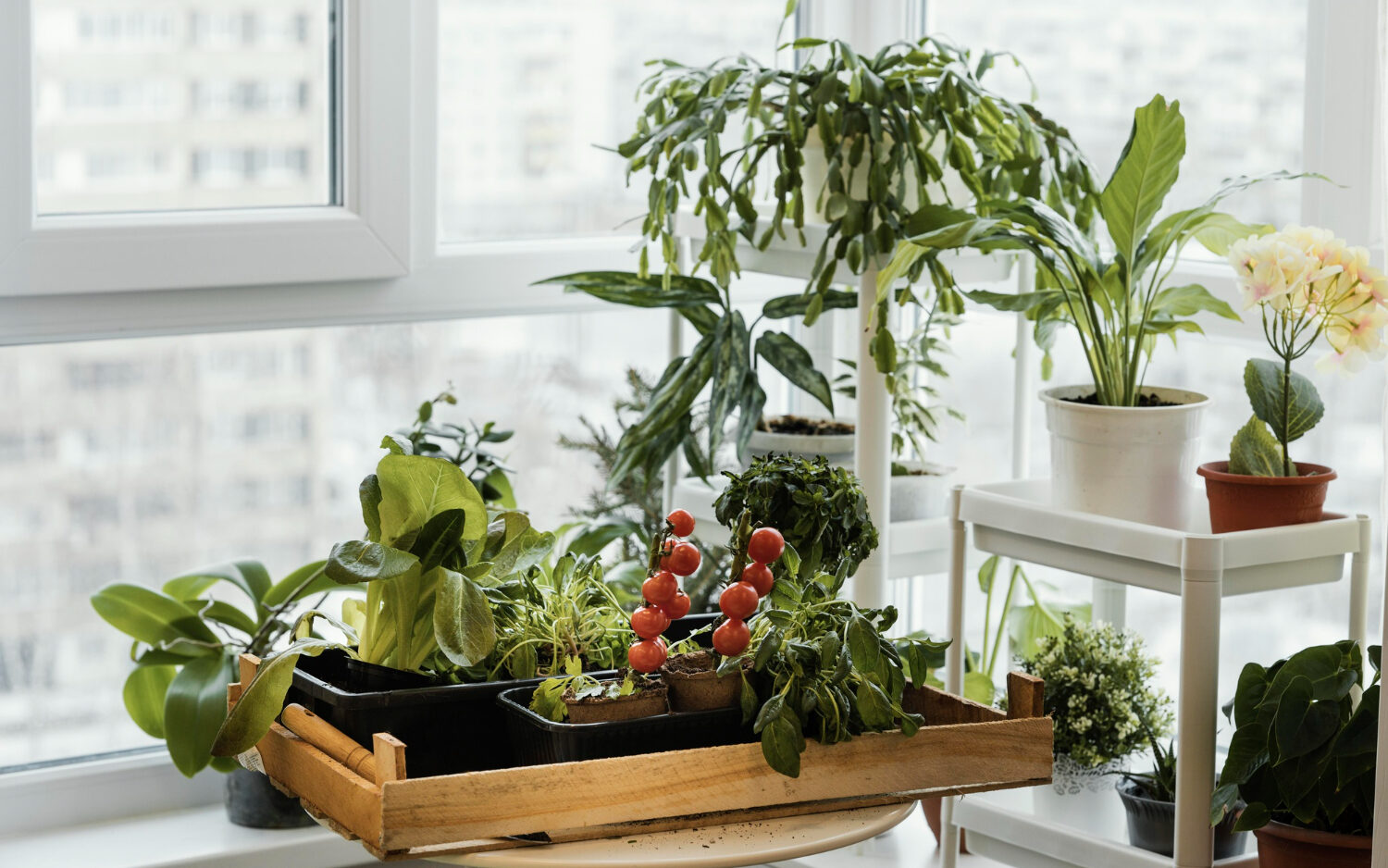Introduction: Bringing the Outdoors Inside
Imagine walking into your kitchen to pick fresh basil leaves to use in your pasta, cutting the chives to make your omelet, or adding a little mint to your tea without ever setting foot outside. Through indoor herb gardening the dream is now a reality by allowing you to plant an abundant herb garden in the middle of your house, all year. In this article, we’ll look at the benefits and methods of growing herbs indoors. This will enable you to take advantage of the flavors and scents of fresh herbs if your dishes call for the use of herbs.

1. Selecting the Best Herbs
The first step of indoor herb gardening is choosing the best herbs to suit your growing conditions and your culinary preferences. Although many herbs thrive in indoor environments, some are more in low-light environments that are typically indoors. Some of the most commonly grown herbs indoors include chives and basil mint, parsley, cilantro, thyme, and rosemary. Take into consideration the space available, since some plants can develop larger than others, and need more space to expand their roots.
2. In providing adequate light
The importance of light is vital to the growth and health of indoor plants. While many herbs like full sunlight they are successful in direct light, bright lighting, or under grow lighting. Plant your herb garden close to an east-facing window so that it will receive plenty of sunlight all day. If sunlight isn’t abundant add lighting sources such as LED or fluorescent placed just a few inches over the plants to give them the required spectrum of light to enable photosynthesis.
3. Selecting the Best Containers
Choosing the correct container is vital to successfully growing indoor herbs. Select containers or pots with drainage holes to prevent the soil from becoming saturated and to ensure air circulation. Choose containers made of porous materials like ceramic or terracotta, which permit excess moisture to evaporate and aid in regulating the soil’s moisture levels. Make sure that the containers are big sufficient to hold the roots of your plants and also allow room to grow.
4. Utilizing the Correct Soil Mix
Herbs thrive in a well-drained soil that holds moisture but is not too waterlogged. Choose a premium potter’s mix designed specifically for indoor plants. You can also mix your own with equal parts of potting soil vermiculite and perlite. Avoid using garden soil because it could be contaminated with pests, diseases, or weed seeds that can damage an indoor plant garden.
5. Humidity and watering
The proper amount of water is crucial to the well-being and health of indoor plants. You should water your plants whenever the soil’s top layer appears dry and spongy. Take note not to overwater or allow the soil to dry completely. Make use of a watering pot with a narrow spout, which will provide direct water to your soil. It is important to be careful not to splash water onto the leaves, which could cause fungal infections. Increase the amount of humidity around your plants by putting a tray of pebbles-filled water under the pots, or by misting your leaves frequently.
6. Harvesting and Pruning
Regular harvesting encourages vigorous growth and also extends the duration of the harvest. Pick or pinch leaves whenever you need to and be careful not to take more than one-third of the leaves of the plant at a time. Make use of sharp pruning shears or scissors to cut cleanly and prevent damage to the plant. Regularly trim the plants to get rid of the dead or yellowing leaves, and promote new growth out of the center to the center.
7. Overwintering Herbs
In colder climates many herbs can be grown inside, ensuring availability throughout the year. When the first frost is set you can sift out outside herbs like rosemary, thyme, or oregano, and plant them in pots for indoor use. Set them in a bright glass or under grow lights, and take care of them just as you would any other indoor herb. If properly cared for they will flourish indoors and offer delicious flavors during the winter months.
Final Thoughts: Growing Freshness and Flavor Year-Round
The cultivation of indoor herbs is a satisfying and practical method of bringing the beauty and abundance of the garden to your living space, no matter the time of year. With a little effort and focus, you can cultivate a lush herb garden that offers fresh tastes, aromas, and inspiration for all your culinary endeavors year-round. Get your hands dirty dust off your gardening gloves and let your hands perform their magic as they take a trip of culinary delights from your indoor herb garden.
Have a wonderful time growing as well and may the kitchen be bursting with bright colors and aromatic scents from fresh herb plants!
Checkout: Top Free Home Gardening Books